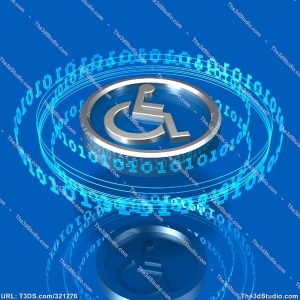5 Key Adaptive Technology Solutions

Adaptive technology has come a long way in recent years, providing innovative ways to assist people with disabilities. These technological innovations have helped those with disabilities to regain facets of their lives that they never thought they would be able to experience. The abilities regained fall into several major categories that span the scope of everyday life.
1. Regained Freedom
People with disabilities related to mobility used to have to rely on others to help them get around on an ongoing basis. This all changed with the development of powered wheelchairs and handicapped vans, which allow those confined to wheelchairs to get behind the steering wheel again (or for the first time). A regained sense of freedom can go a long way toward helping people with disabilities enjoy a quality of life that they wouldn’t otherwise have.
2. Regained Education
The public education system in the U.S. has struggled for a long time to integrate students with disabilities into the classroom. Technology has made it easier to give each student the personalized program needed to educate each student by using his strengths, interests and pacing. iPhones and iPod Touches are being increasingly used in special education classrooms, allowing students who have trouble communicating or concentrating to learn on touch screens and taking some of the stress off the teachers.
3. Regained Entertainment
Watching television used to be very difficult for people who were hard of hearing because they couldn’t hear what was being said on-screen. Beginning in 1993, the FCC required that televisions include technology for closed captioning, which displays speech along the bottom of the screen in real time. This technology was critical for allowing people to read what was happening on the news and on all of their programming, not just for movies or shows with built-in captions. Since then, close d captioning technology has become more sophisticated so that it does an even better job of providing accurate text for spoken words in programming.
d captioning technology has become more sophisticated so that it does an even better job of providing accurate text for spoken words in programming.
4. Regained Communication
One of the primary ways that people with disabilities have been able to regain their ability to communicate with and interact with the rest of the population is through text-to-speech technology. It’s a useful solution with people who have vision or hearing problems. People who can’t see text can benefit from hearing it spoken to them. On the other hand, people who can’t hear can use text-to-speech technology as a method of outgoing communication when they don’t have speaking skills and are with people who don’t know sign language. They just type what they want to communicate on a device that speaks it for them.
5. Regained Technology
There are many clever input systems for computers these days, including puff-and-sip controls that allow the user to control on-screen options with their breath and keyboard filters that help people type with fewer keystrokes. People with disabilities are able to interact with computers, tablets and phones through whatever method works best for them.
We can be sure that in the future, technology will continue to expand to meet the needs of people with disabilities. These innovations have a large market, including thousands of happy users who are thrilled to be able to do some of the things they were missing out on. Every time another need is recognized, developers are sure to get to work coming up with a way to meet that need and help people with disabilities regain some of their independence.
